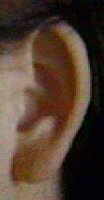Estrogen Use with Progesterone
Cut down and Eventually Stop Estrogen Use with Progesterone
Women after menopause produce 40% of
the estrogen that they did before menopause. Progesterone levels fall to less than 1% of premenopause levels. Progesterone
resensitizes the body's cells to estrogen. So estrogen pills can be cut back and eventually stopped.
by Elizabeth Smith, M.D.
According to Dr. Lee, Theo Colborn, and other researchers, women in America and developed countries are getting
too much estrogen. Where does this estrogen come from? First of all, the woman produces estrogen herself before
and after menopause. Second, she may be taking estrogen by pill or by skin patch for hormone replacement or for
birth control. Third, she may be getting estrogen effects from chemicals that mimic estrogens known as xenoestrogens.
These xenoestrogens include estrogens fed to agricultural animals that we in turn eat,
detergent break down products, plastic containers used for food and water, pesticides, and even spermicide.
A woman produces estrogen in mainly two places. The follicle on the ovary produces  estrogen.
The fat cells produce estrogen. The more fat you have, the more estrogen you produce. When women go through menopause
(after age 50), their estrogen production goes down to 30%-50% of premenopause levels. However, progesterone production
goes down to less than 1% of premenopause levels. A heavy set woman after menopause will actually produce more
estrogen than a skinny woman before menopause.
estrogen.
The fat cells produce estrogen. The more fat you have, the more estrogen you produce. When women go through menopause
(after age 50), their estrogen production goes down to 30%-50% of premenopause levels. However, progesterone production
goes down to less than 1% of premenopause levels. A heavy set woman after menopause will actually produce more
estrogen than a skinny woman before menopause.
Around menopause, perimenopause (ages 30 - 50), a woman may have periods, but not ovulate. Usually multiple eggs
get ready to ovulate and form follicles on the ovary. The ovary produces estrogen. One follicle becomes dominant.
That follicle ruptures, the egg is released, and all the other follicles become smaller and eventually disappear.
The ruptured follicle is called the corpus luteum, and the ovary produces progesterone. Around the time of menopause,
sometimes the dominant follicle DOES NOT rupture, the egg DOES NOT ovulate, the corpus luteum is NOT formed, and
NO progesterone is produced. Thus, around the age of menopause, perimenopause, estrogen is produced, but LITTLE
or NO progesterone is produced. This is known as an anovulatory cycle.
|

|
Thus, around the time of menopause (perimenopause) and after
menopause progesterone levels drop tremendously.
I Started Progesterone and Now I Feel
Worse. Why?
 Constant
estrogen ingestion in the form of pills or xenoestrogens causes the estrogen receptors to down regulate. In other
words, the woman's body has so much estrogen that the estrogen receptors become less sensitive. A good analogy
would be when you enter a noisy room. When you first enter the room you notice the noise. However, after being
in the noisy room for a while, the noise becomes less noticeable. Your ears become less sensitive to the noise.
In effect, your ears down regulate. Thus, if you take estrogen supplements or get doses of xenoestrogens after
a while your body will become less sensitive to estrogens. This is because your body has too much estrogen, and
the body tries to become less sensitive. However, when you take progesterone the estrogen receptors are resensitized
to their original sensitivity. In other words, when you begin to take progesterone, you regain your original sensitivity
to estrogen.
Constant
estrogen ingestion in the form of pills or xenoestrogens causes the estrogen receptors to down regulate. In other
words, the woman's body has so much estrogen that the estrogen receptors become less sensitive. A good analogy
would be when you enter a noisy room. When you first enter the room you notice the noise. However, after being
in the noisy room for a while, the noise becomes less noticeable. Your ears become less sensitive to the noise.
In effect, your ears down regulate. Thus, if you take estrogen supplements or get doses of xenoestrogens after
a while your body will become less sensitive to estrogens. This is because your body has too much estrogen, and
the body tries to become less sensitive. However, when you take progesterone the estrogen receptors are resensitized
to their original sensitivity. In other words, when you begin to take progesterone, you regain your original sensitivity
to estrogen.
 "When you begin to take progesterone, you regain your original sensitivity to estrogen." |
The solution is to cut back on the dose of estrogen. Dr.
Lee recommends immediately cutting back the dose to 1/2 of the normal dose. He recommends stopping the estrogen
dose altogether over a period of 3-4 months phasing out the dose of estrogen slowly. He maintains that women's
bodies produce enough estrogen already. See the graph above!
Summary
In summary, women already get too much
estrogen. They produce estrogen themselves from the follicles on their ovaries and from their fat cells premenopause
and perimenopause. After menopause, the woman's fat cells produce estrogen. Women also get estrogen from birth
control pills and hormone replacement therapy. Women get estrogen from chemicals that mimic estrogen know as xenoestrogens. These chemicals are present in everyday materials previously thought to be
inert such as detergent break down products, plastics used to store water, varnish in food cans used to prevent
the "metal" taste, pesticide, and even spermicide.
In summary, taking progesterone will resensitize
the estrogen receptors so that your body becomes more sensitive to estrogen supplements or xenoestrogens. The solution
is to immediately cut the dose of estrogen to 1/2, and DISCONTINUE estrogen supplements altogether
over a period of 3-4 months. Cut out as much xenoestrogen intake as possible. The body's internal production of
estrogen is more than sufficient.


